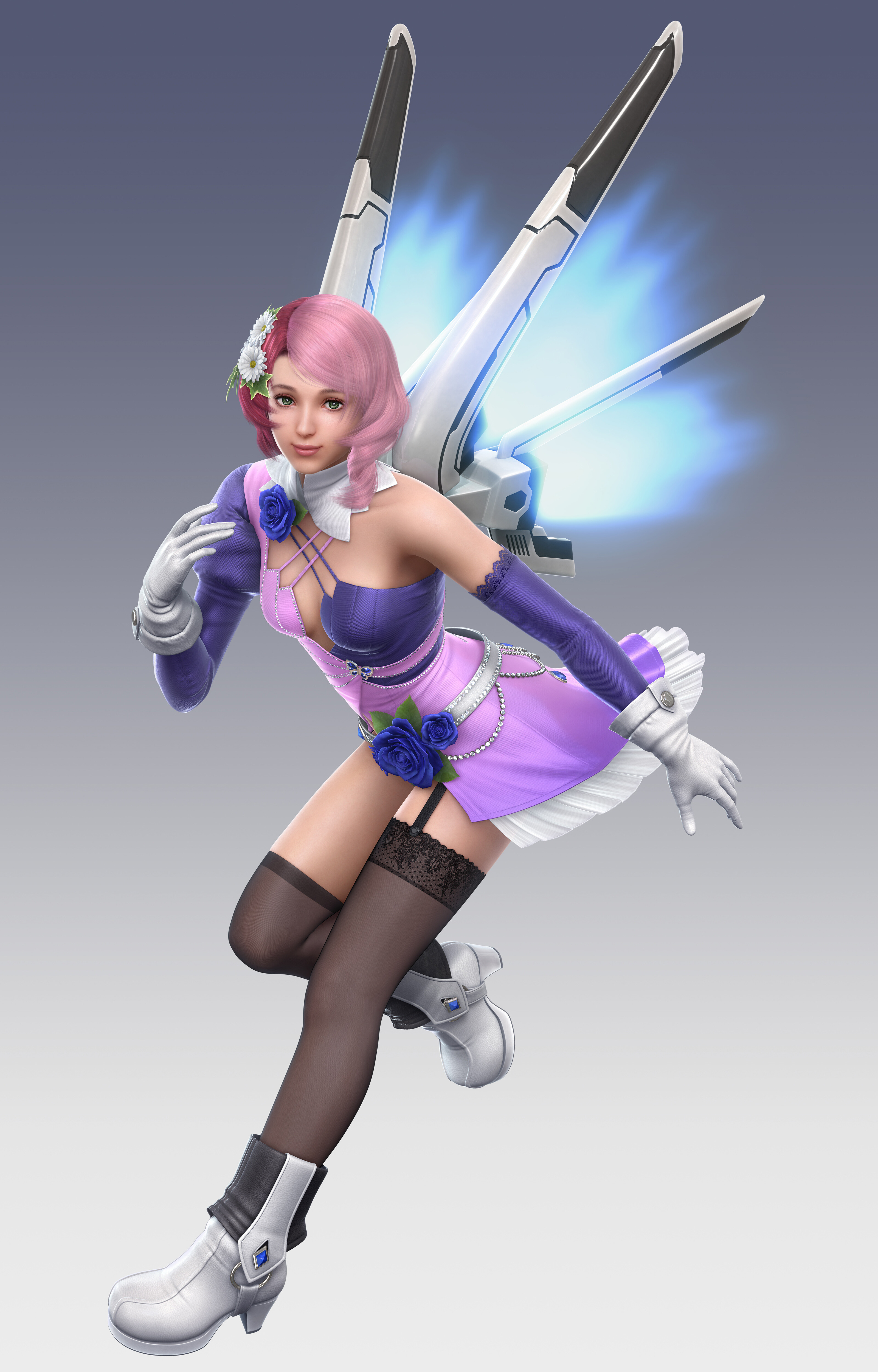Tekken Meets Manga: Mutual Inspirations and Influences Between the World of Tekken and Anime
 Introduction: From Street Fights to the Legendary Arena
Introduction: From Street Fights to the Legendary Arena
When Namco released the first installment of "Tekken" in 1994, few could have predicted that it would become one of the most significant titles in the history of fighting games, as well as an important element of global pop culture. The factors that positioned Tekken as a premier fighting game for consoles and arcades—whether it's the intricate system of moves and combos, the engaging characters, the storyline, the speed of combat, or the sheer joy of gameplay—are topics in themselves. But it was probably a mix of all these factors, in just the right amounts, that did the trick.
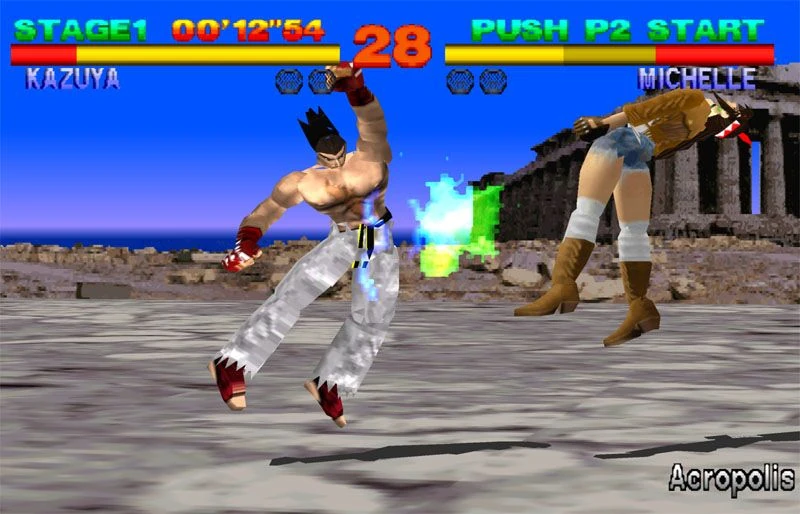
Foundations of Tekken's Aesthetics: Merging Modernity with Tradition
From its inception, Tekken stood out with a unique aesthetic founded on blending cutting-edge graphic techniques with traditional elements of Japanese culture. Observing characters like Heihachi Mishima or Kazuya, one can see that while they have a contemporary appearance, their attire and fighting styles hint at traditional Japanese martial arts.


One can't overlook the tattoo elements gracing the bodies of some characters. These designs are directly inspired by the Japanese art of irezumi – traditional tattooing that has been practiced among samurais and yakuza criminals for centuries. An example would be the character Bryan Fury, whose tattoos deeply embody this tradition.
Elements of Manga and Anime in Tekken's Aesthetics
It's undeniable that Tekken is brimming with references to the world of manga and anime. These references are clearly visible not only in the characteristics and appearance of characters, but also in how these characters interact with each other and their environment. For instance, Ling Xiaoyu's attire, appearance, and somewhat naive yet energetic personality resemble typical heroines from Japanese anime series. Her boldness and youthful enthusiasm are archetypes often found in youth-focused manga.
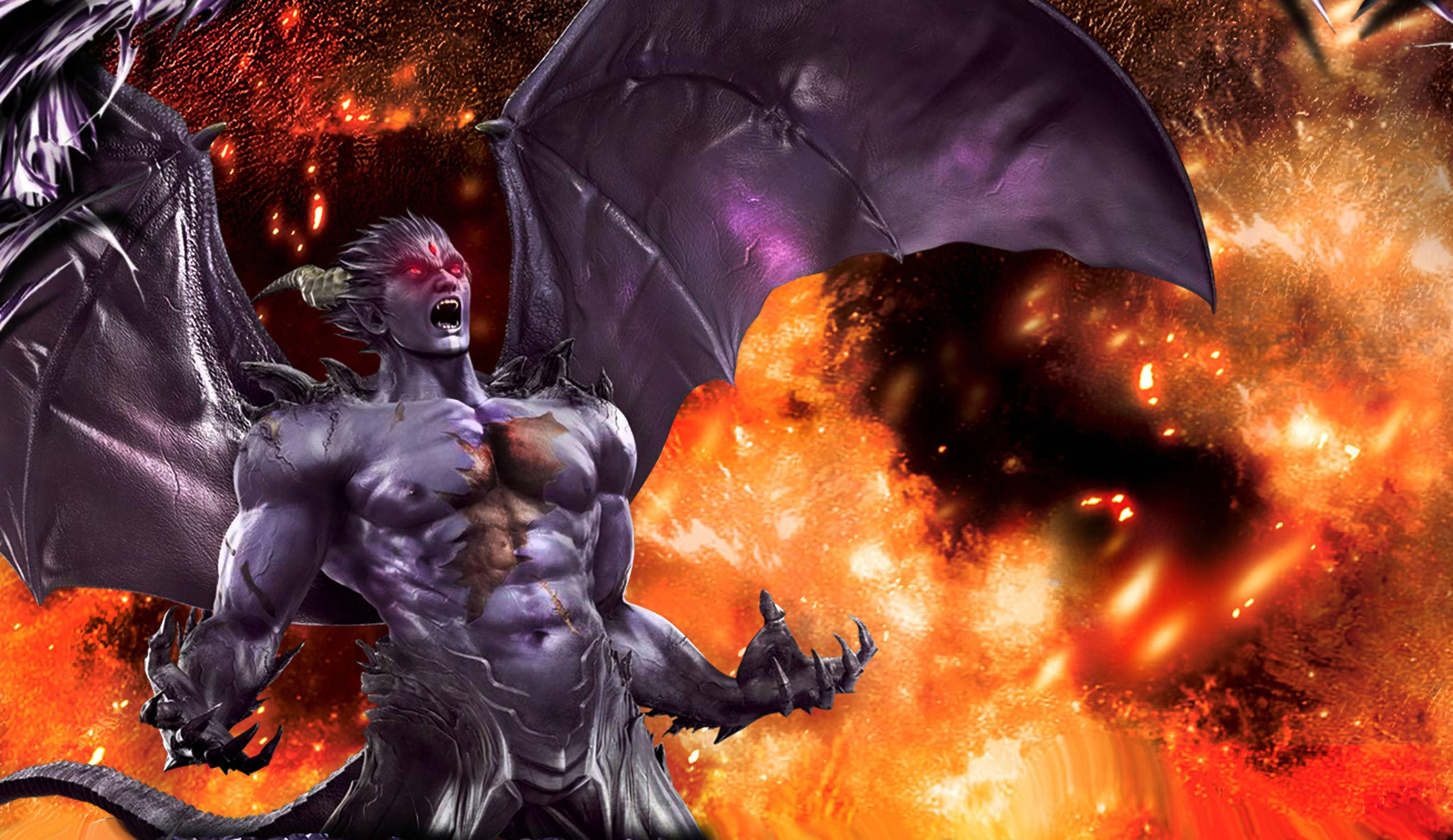
Also noteworthy is how the Tekken game's storyline is presented. Narration often takes the form of short animated sequences reminiscent of anime clips. The aesthetics of these animations, from drawing style to color palette, distinctly reference Japanese animated productions. Characters have large, expressive eyes, typical of anime heroes, and their facial expressions and gestures are exaggerated, underscoring the drama and intensity of the scenes played out.
Looking at various characters in Tekken, many of them exhibit features characteristic of manga and anime heroes. Alisa Bosconovitch, with her mechanical wings, the ability to detach her arms to use them as weapons, and her innocent, almost childlike face, recalls characters from anime like "Chobits" and "Ghost in the Shell", where the line between human and machine is often blurred. Her design is the quintessence of merging technology with the "kawaii" or "cute" aesthetic so popular in anime culture.
Equally intriguing is Lili, with her intricate outfits and a dynamic fighting style reminiscent of acrobatics. Her blonde hair, long legs, and capricious personality allude to many manga and anime heroines, especially those of the shoujo genre. Her rivalry with Asuka Kazama mirrors conflicts between central characters in many anime series, where rival heroines often strive to outdo each other both in combat and personal animosities. Both these characters are excellent examples of how deeply manga and anime aesthetics have been woven into the fabric of the Tekken universe.
Tekken Characters vs Manga/Anime Archetypes
Kazuya Mishima: When we look at Kazuya Mishima, we see the archetype of the antihero often found in Japanese comics and anime series. His dark past, internal conflicts, and demonic power remind us of antagonists like Vegeta from "Dragon Ball" or Sasuke Uchiha from "Naruto". His relationships with his family, especially with father Heihachi and son Jin, echo the intricate family dramas central to many manga and anime stories.

Yoshimitsu: This enigmatic character is one of the most unique in Tekken. While his design is futuristic, it heavily references traditional Japanese samurais and ronins. The appearance of his weapon, mask, and moving outfit elements evoke characters from anime like "Rurouni Kenshin" or "Basilisk". It's a blend of futuristic style with traditional Japanese motifs.
Gon: Although a guest character in the series, Gon exemplifies the humorous side of manga. His small stature, exaggerated movements, and comedic fighting style refer directly to many comic heroes who, despite their small size, can pack a punch.
Asuka Kazama: Her strong character and ability to face adversity resemble typical characters from the shounen genre, such as Nami from "One Piece" or Orihime from "Bleach". Her traditional Japanese outfit and fighting style reflect values and aesthetics often seen in manga and anime.
Hwoarang: His youthful rebellion, passion for fighting, and dynamic kicks remind us of many anime fighters, like Ichigo Kurosaki from "Bleach" or Rock Lee from "Naruto".
Lili Rochefort: While her connections to manga and anime aesthetics have been discussed, it's worth noting that her rich background and capricious nature are reminiscent of characters like Erina Nakiri from "Food Wars" or Misa Amane from "Death Note".
Heihachi Mishima: His brutality, dominant personality, and charisma evoke antagonists like King Bradley from "Fullmetal Alchemist" or Dio Brando from "JoJo's Bizarre Adventure". His distinctive hair and beard are also typical of elder, powerful figures in Japanese comics.
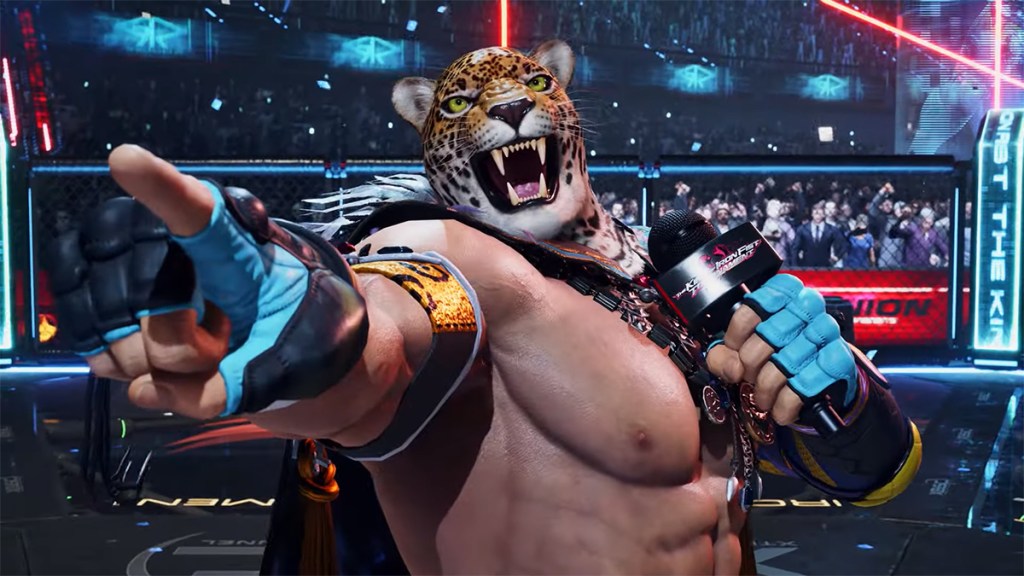
Jun Kazama: A delicate yet confident mother of Jin Kazama. Her elegant appearance and fluid combat movements reference many heroines from fighting-themed anime, such as Kikyo from "InuYasha". Her strong connections with nature, as well as bird and flower motifs in her design, reflect typical anime and manga motifs of nature's power intertwining with the human spirit.

Kunimitsu: Initially introduced as a rival to Yoshimitsu, her character evolved in subsequent Tekken installments. Her mask, red eye color, and precise, swift combat style remind of ninjas from anime like "Naruto" or "Basilisk". Her mysterious nature and ability to move with unparalleled grace and precision reflect many kunoichi (female ninja) archetypes in manga and anime culture.
Manga and Anime based on Tekken
"Tekken: The Motion Picture"

Manga based on Tekken
Their style and how they reflect the game's universe: Manga based on Tekken, though lesser-known in the West, play a significant role in Japan, allowing fans a deeper understanding of characters and the storyline. Unlike the games where fighting is the primary element, the manga offers a more developed narrative, showcasing characters' backgrounds, their motivations, and relationships with other heroes. The graphic style of Tekken manga, although echoing the game, often has more detailed and intricate drawings, emphasizing characters' emotions and personalities.
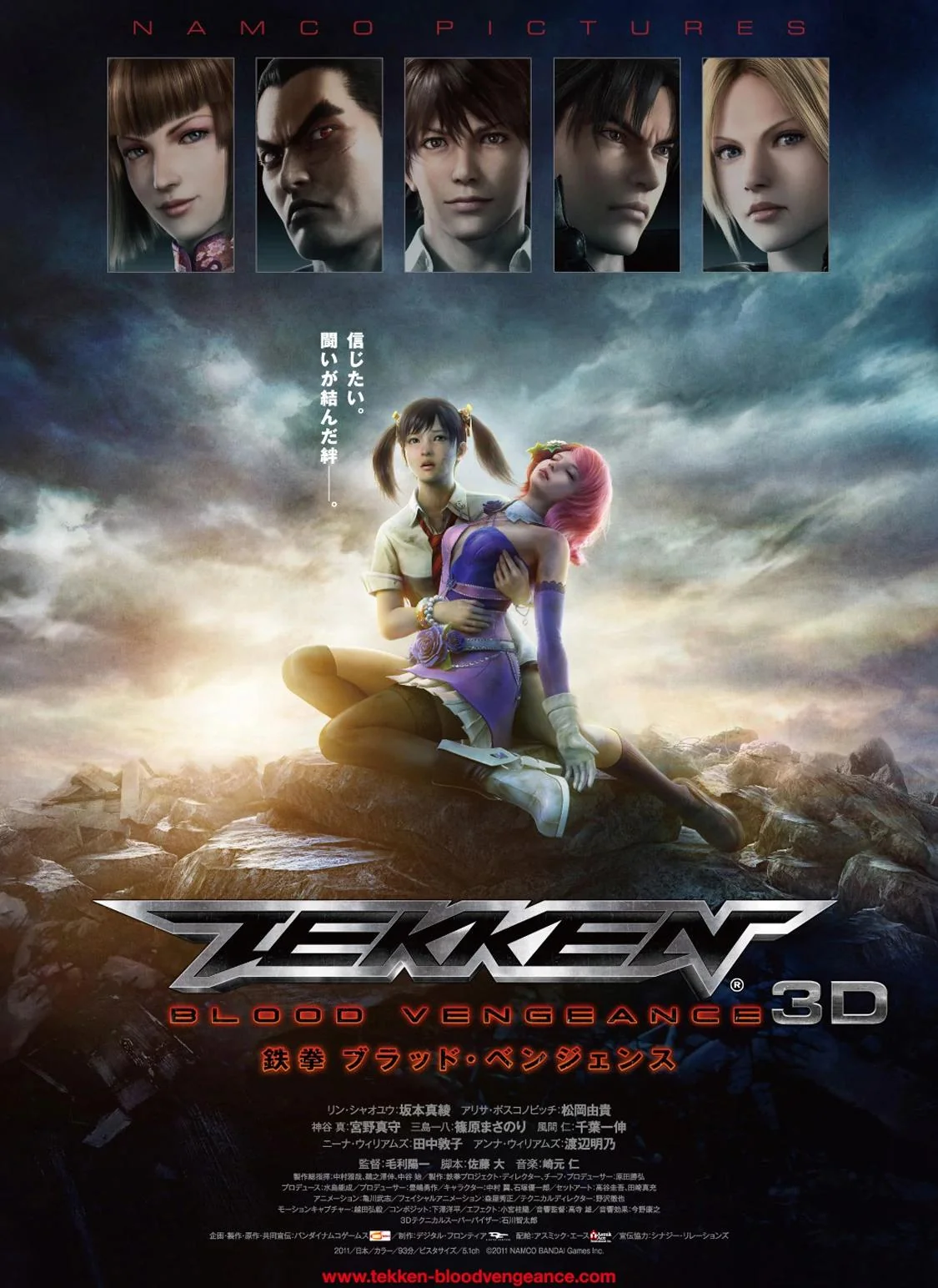
In 2011, "Tekken: Blood Vengeance", a feature-length anime based on the Tekken series, was released. This movie, released between T6 and TTT2, focuses on the characters Ling Xiaoyu and Alisa Bosconovitch, who are assigned to investigate a mysterious student named Shin Kamiya. The film's plot adds to the main Tekken storyline, focusing on the relationship between these two girls and the threat posed by the mysterious M project. The movie's modern animation approach and more youthful tone reflect the characters' growing popularity among younger viewers. "Tekken: Kazuya's Revenge" Although not strictly an anime, it's worth mentioning "Tekken: Kazuya's Revenge" from 2014. This live-action movie, with its aesthetics and plot referencing Japanese productions, focuses on the younger years of Kazuya Mishima, showing his transformation into a cold-blooded warrior and the family antagonisms that later became key motifs of the series. While it deviated from traditional anime, its manga inspirations, especially in portraying fights and character dynamics, were evident.
"Tekken Comic"
While not a film or traditional anime, it's worth noting the official manga "Tekken Comic", which was published in 1997-1998. It mainly focuses on relationships between the series' main characters, such as Kazuya, Heihachi, or Paul Phoenix. Through this manga, fans could see not only fights but also the daily lives, thoughts, and feelings of the characters, which were limitedly portrayed in the game. This manga, though short, became a significant addition to the Tekken universe, showing its characters in a completely new light.
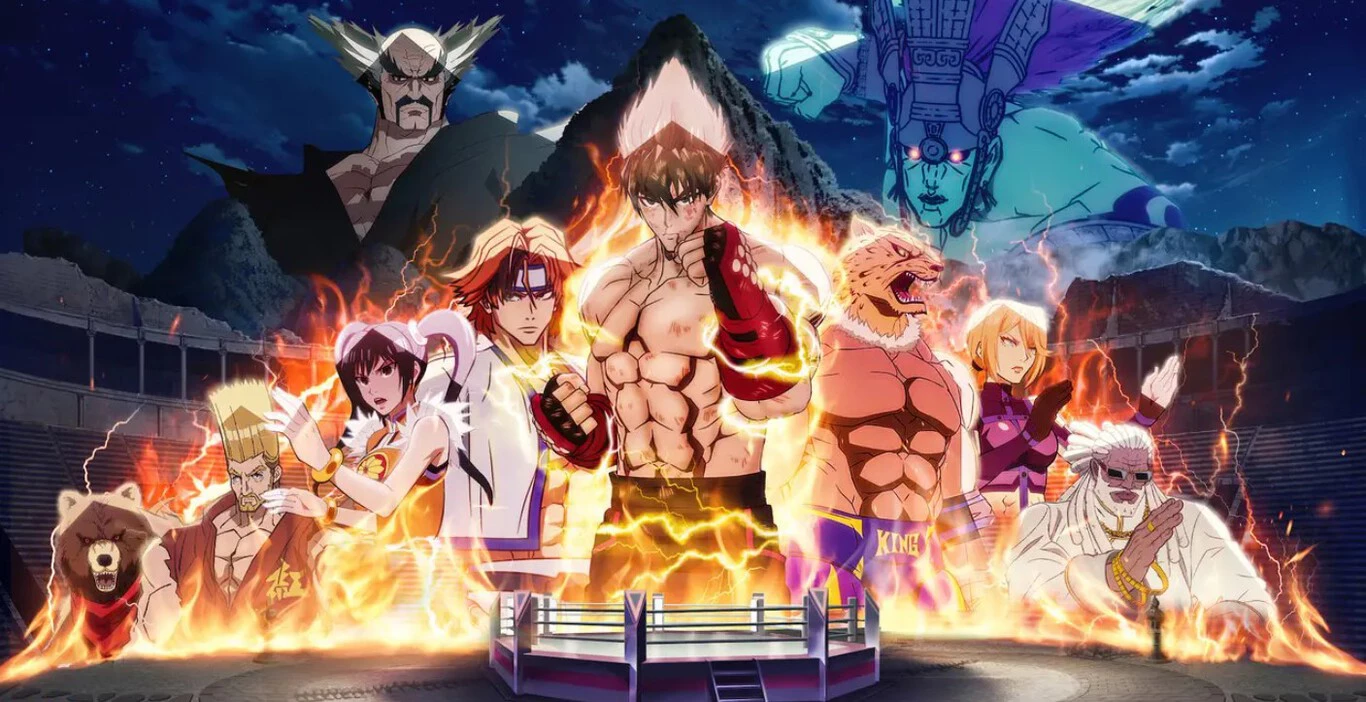
"Tekken: Bloodline" is a fresh offering for fans of the series on the Netflix platform, rejuvenating the Tekken legend by focusing on one of the most recognizable characters in its universe - Jin Kazama. The series narrates the touching story of a young warrior's revenge after the death of his mother at the hands of a demonic entity. In just six episodes of the first season, we have the opportunity to witness Jin's evolution, from his trainings, finding his grandfather - Heihachi Mishima - to an exhilarating confrontation in the King of Iron Fist tournament and facing his own inner demons.
It's worth highlighting that the show's creators have successfully translated the dynamics and combat style from the games onto the screen. The choreography of the duels, the visualization of strikes and combos, as well as the distinctive game series' flares and color palette have been faithfully reproduced, undoubtedly delighting fans. The introduction of a distinct style, reminiscent of iconic anime from the 90s and early 2000s, lends "Tekken: Bloodline" a unique character. It's a blend of nostalgia with modernity - echoes of classics like "Beyblade" or "Yu-Gi-Oh" intertwine with an innovative approach to Tekken themes.
While many fans might have hoped for a broader introduction to the Tekken world encompassing its rich roster of characters, "Tekken: Bloodline" primarily revolves around Jin's story. Many familiar faces from the series only appear in supporting or episodic roles, which might be somewhat disappointing for those who anticipated a more comprehensive adaptation. Nonetheless, "Tekken: Bloodline" captivates with its expertly executed action, deep character portrayal, and a pronounced emphasis on moral dilemmas and shades of gray in conflicts.
Much Broader and Bigger Than Just a Game
Starting from its roots as a video game fighter, through numerous manga adaptations, to animated movies and series, Tekken has become an undeniable phenomenon in both Japanese and global culture. The game's representation in media is evidence of how deeply the story of the Mishima family and other characters has resonated in the hearts of fans worldwide. Reflecting on Tekken is simultaneously a reflection on the evolution of pop culture: how certain narratives, styles, and characters traverse various media, adapting to changing tastes yet remaining true to their core.
As the worlds of video games, manga, and anime increasingly intertwine, one can surmise that the relationship between Tekken and the world of Japanese comics and animation will continue to flourish. It's not only the adaptations, but also the inspirations, references, and drawing from various sources that will contribute to the further evolution of both realms. Looking forward, Tekken, being one of the pillars of pop culture, has a bright path filled with new opportunities and surprises. In light of this dynamism, it's exciting to anticipate what the next decade holds for this iconic series.
"Strong Japanese Women"
see book by the author
of the page
未開 ソビエライ
An enthusiast of Asian culture with a deep appreciation for the diverse philosophies of the world. By education, a psychologist and philologist specializing in Korean studies. At heart, a programmer (primarily for Android) and a passionate technology enthusiast, as well as a practitioner of Zen and mono no aware. In moments of tranquility, adheres to a disciplined lifestyle, firmly believing that perseverance, continuous personal growth, and dedication to one's passions are the wisest paths in life. Author of the book "Strong Women of Japan" (>>see more)
Personal motto:
"The most powerful force in the universe is compound interest." - Albert Einstein (probably)
Mike Soray
(aka Michał Sobieraj)
未開 ソビエライ
An enthusiast of Asian culture with a deep appreciation for the diverse philosophies of the world. By education, a psychologist and philologist specializing in Korean studies. At heart, a programmer (primarily for Android) and a passionate technology enthusiast, as well as a practitioner of Zen and mono no aware. In moments of tranquility, adheres to a disciplined lifestyle, firmly believing that perseverance, continuous personal growth, and dedication to one's passions are the wisest paths in life. Author of the book "Strong Women of Japan" (>>see more)
Personal motto:
"The most powerful force in the universe is compound interest." - Albert Einstein (probably)
Mike Soray
(aka Michał Sobieraj)
Write us...
Ciechanów, Polska
dr.imyon@gmail.com
___________________
inari.smart
Would you like to share your thoughts or feedback about our website or app? Leave us a message, and we’ll get back to you quickly. We value your perspective!
 Introduction: From Street Fights to the Legendary Arena
Introduction: From Street Fights to the Legendary Arena 